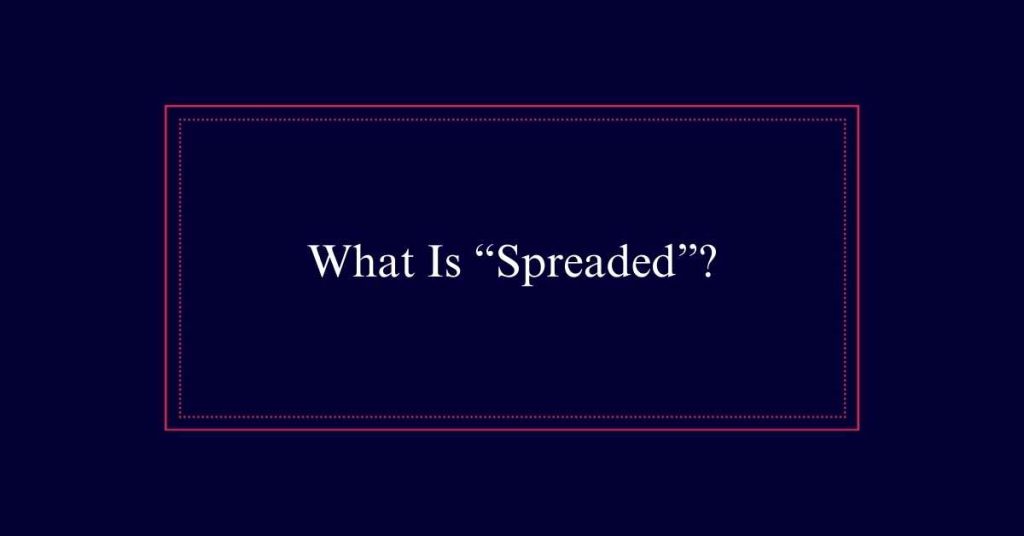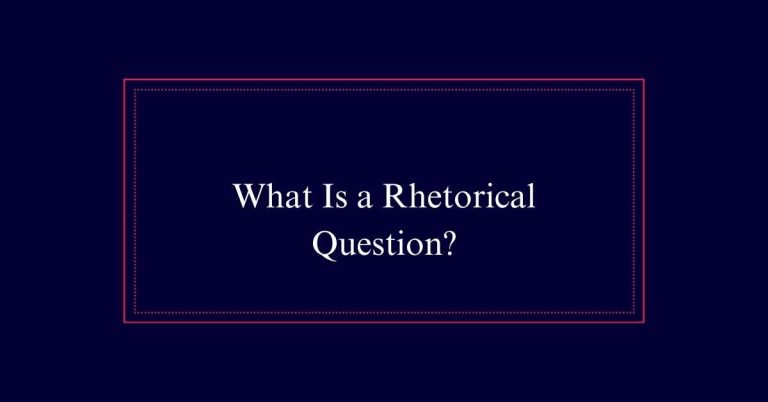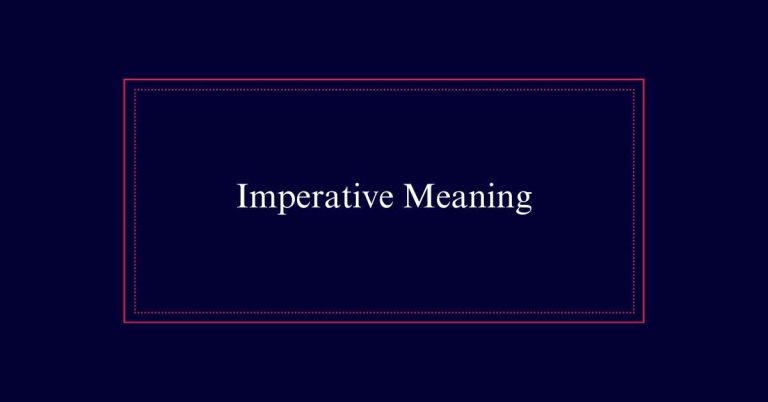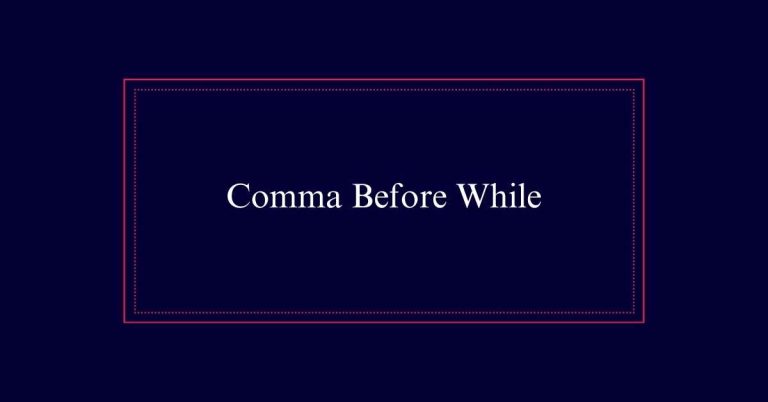What Is “Spreaded”?
“Spreaded” is a rare, nonstandard form of the past tense of the verb “spread.” The correct past tense in English is “spread.” The use of “spreaded” is considered a grammatical error and is not listed in dictionaries. Historically, “spreaded” has appeared in informal contexts but has never been accepted in formal writing. This misconception arises from the pattern of adding “-ed” to create past tenses.
Definition of ‘Spreaded’
‘Spreaded’ is a rare, nonstandard variant of the past tense of the verb ‘spread’. In standard English, the correct past tense form is ‘spread’.
The use of ‘spreaded’ is often seen as a grammatical error. Some people might find ‘spreaded’ fitting due to its similarity to other regular past tense forms like ‘shredded’ and ‘sledded’. Despite its occasional appearance in news sources or informal contexts, it is not widely accepted.
Dictionaries and language references typically do not list ‘spreaded’ as a valid form. In professional writing, it is important to use the correct past tense ‘spread’ to ensure clarity and adherence to standard grammar rules.
Historical Usage
The historical usage of ‘spreaded’ can be traced back to occasional informal contexts, despite its nonstandard status. It appears sporadically in casual speech and writing, often influenced by the regular past tense pattern.
The verb ‘spread’ is irregular, with ‘spread’ serving as both the present and past tense. However, some individuals have used ‘spreaded’ by analogy to regularly conjugated verbs.
Historical texts and informal records show instances where ‘spreaded’ was employed, though it never gained acceptance in formal grammar. These occurrences are rare and typically seen in personal letters, diaries, and casual conversation.
Over time, the use of ‘spreaded’ has diminished, with ‘spread’ remaining the standard form recognized in both written and spoken English.
Common Misconceptions
Many people mistakenly believe that ‘spreaded’ is an acceptable past tense form of ‘spread’. This misconception arises from the common pattern of adding ‘-ed’ to verbs to form their past tense.
However, ‘spread’ is an irregular verb and does not follow this pattern. Despite its intuitive appeal, ‘spreaded’ is not recognized in standard English.
Incorrect Assumption: Many assume that ‘spreaded’ follows the typical past tense formation rule.
Lack of Awareness: There is often a lack of awareness about irregular verbs in English.
Informal Usage: Some people use ‘spreaded’ informally, thinking it is acceptable.

Grammar Rules
In English, grammar rules for forming past tense verbs generally involve adding ‘-ed’ to the base form. This applies to regular verbs like ‘talk’ (talked) and ‘play’ (played).
However, some verbs do not follow this pattern and are considered irregular. These verbs can have unique past tense forms that do not end in ‘-ed’.
It is important to note that verbs like ‘spread’ fall into this irregular category. The correct past tense of ‘spread’ remains ‘spread’ rather than ‘spreaded’.
Irregular Verbs
Irregular verbs in English deviate from the standard ‘-ed’ past tense formation, often necessitating memorization of their unique forms.
Unlike regular verbs, irregular verbs do not follow a predictable pattern, making them challenging for language learners.
For example, the verb ‘spread’ remains ‘spread’ in both its base and past tense forms. This irregularity necessitates understanding each verb individually.
Key points to remember:
- Irregular verbs do not follow the ‘-ed’ rule.
- They often require memorization.
- Examples include ‘spread’, ‘go’ (went), and ‘come’ (came).
These verbs are common in English and essential for proper language use. Mastering them guarantees clarity and accuracy in both written and spoken communication.
Why ‘Spreaded’ Appears
The appearance of ‘spreaded’ can be attributed to the irregular nature of English verbs, which often confuses speakers and writers. English verbs typically form their past tense by adding ‘-ed’. However, ‘spread’ does not follow this rule and remains ‘spread’ in its past tense form. This irregularity leads some to mistakenly apply the standard ‘-ed’ ending, resulting in ‘spreaded’.
Additionally, the similarity to correctly formed past tenses of other verbs like ‘shredded’ and ‘sledded’ reinforces this error. Non-native speakers, in particular, may find such inconsistencies challenging and may default to a more regular pattern. This misuse highlights the complexities of mastering English verb forms, even for those with a strong command of the language.
Acceptance in Informal Contexts
Though considered incorrect in formal writing, ‘spreaded’ can occasionally be accepted in informal contexts. In casual conversations among friends or family, the use of ‘spreaded’ may not be heavily scrutinized. Social media posts, text messages, and informal emails are environments where linguistic flexibility is more permissible. This is largely due to the relaxed nature of these interactions.
In everyday speech, people often prioritize communication over strict grammar rules.
Platforms like Twitter or Facebook encourage brevity and may overlook minor grammatical errors.
Informal text exchanges prioritize speed and clarity over grammatical precision.
Thus, while ‘spreaded’ remains incorrect in formal contexts, it finds occasional acceptance in everyday, informal use.
Formal Writing Standards
In formal writing, adherence to standard grammar rules is essential to maintain professionalism and clarity. Using nonstandard forms like ‘spreaded’ can undermine the credibility of your writing. The correct past tense of ‘spread’ is ‘spread’, an irregular form that does not follow the typical ‘-ed’ ending.
Irregular verbs can be challenging, but following established norms is vital in professional contexts. This maintains your writing is easily understood and respected. Deviating from standard grammar can distract readers and reduce the impact of your message.
Hence, it is important to use ‘spread’ instead of ‘spreaded’ to align with formal writing standards and uphold the integrity of your work.
Comparison With ‘Spread’
When comparing ‘spreaded’ with ‘spread’, it is clear that ‘spread’ is the standard and accepted past tense form. ‘Spread’ is an irregular verb, meaning it does not follow the typical ‘-ed’ suffix rule for past tense.
Here are key points to emphasize the differences:
- ‘Spread’ is recognized and listed in dictionaries as the correct past tense.
- ‘Spreaded’ is not widely accepted and is often viewed as a grammatical error.
- Using ‘spread’ aligns with formal writing standards and professional norms.
Recommendations
To maintain clarity and professionalism, it is recommended to use ‘spread’ as the past tense form in all formal writing. This guarantees consistency and adherence to standard grammar rules. Below is a comparison to highlight the correct usage:
| Context | Correct Form | Incorrect Form |
|---|---|---|
| Formal Writing | spread | spreaded |
| Informal Speech | spread | spreaded |
| Professional Communication | spread | spreaded |
Using ‘spread’ aligns with grammatical norms and avoids confusion. While ‘spreaded’ might seem intuitive, it is not widely accepted. Adhering to the standard form ‘spread’ maintains the integrity of your writing and ensures clear communication. This practice is essential for non-native speakers and professional environments.






